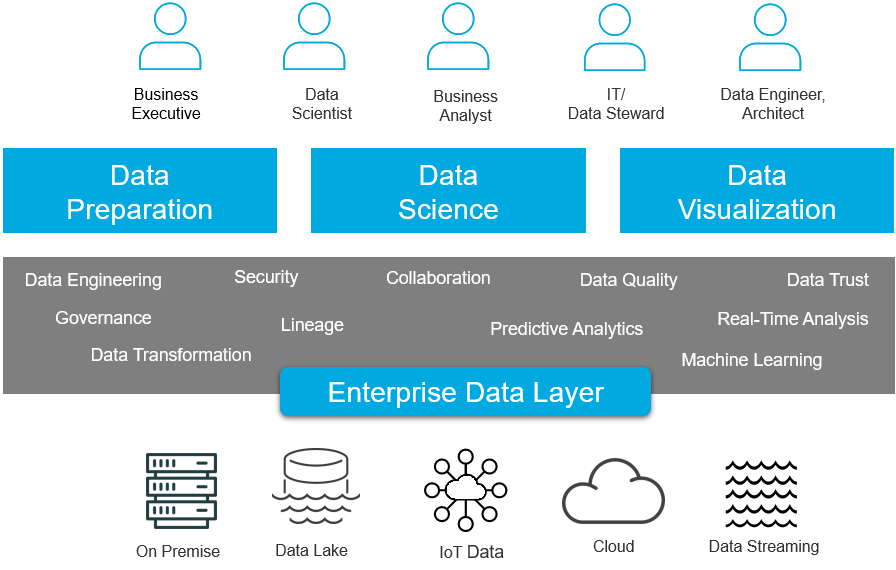Data Fabric: Weave a Better Data Strategy Across Your Organization

By the year 2025, IDC predicts the amount of data worldwide will reach 175 zettabytes (ZB). How much is that really? If 175ZB were stored on Blu-Ray disc, the stack would reach the moon. And consider this: that prediction is nine percent higher than it was in the previous year’s report and likely to increase again. So, needless to say, the complexity of managing and, more importantly, mining this exponentially increasing amount of data is a top-of-mind challenge for just about every organization.
It has become mission-critical to ensure that the right IT infrastructure and processes are in place to help decision-makers manage, transform, and prepare data to gain meaningful insights. That’s where the concept of a “data fabric” comes in. With data’s pervasive nature it’s not hard to understand how the term came to be. It’s an apt analogy for the architecture businesses need to wrap their strategies and processes around an ever-growing pool of data.
What is a data fabric?
Simply put it’s a way to make sense of all the different data sources and tools an organization weaves together to manage its own data ecosystem. The term has picked up steam in recent years and there are even vendors who use the term for their data management offerings. In fact, in 2016, Forrester officially added Big Data Fabric as a category in the Forrester Wave, making it official.
Can it help me better manage my data?
Yes. The strength of your organization’s data fabric comes down the data management ecosystem you’re working with. Given the amount of data companies are working with and the collaborative nature of data strategies, those environments can be quite complex including tools for data prep, predictive analysis, data visualization, and more.
For the enterprise it’s now understood that data and the informed insight it provides needs to be incorporated into every aspect of operations. Data once kept under the close watch of IT has been democratized and flows freely throughout organizations. This new reality has definite upsides — more collaboration and perspectives allow companies to use data in a broader capacity than ever before, ensuring that every corner of their business is data-driven.
What should I weave into my business’ data fabric?
Every organization’s data fabric will be unique to their own use cases, but there are certain functionalities that are becoming must-haves across industries, including:
- Data Prep - Data prep is the foundation of any solid data management strategy. The capabilities set here set the tone for your entire data environment. A solution that makes pulling in multiple sources simple is critical.
- Predictive Capabilities - If you’re only acting on data that’s already happened, you’re about ten steps behind. Predictive tech that uses AI and machine learning to analyze past data and forecast the future is a necessity to stay ahead.
- Data Collaboration - Your data fabric doesn’t just need to enable data collaboration, it needs to be user-friendly for everyone who touches that data, which is everyone. From IT to the C-suite to marketing to sales and beyond, your data solutions need to be user-friendly for all of them or things could unravel quickly.
- Real-time Analysis - According to IDC, nearly 30 percent of data will be consumed in real-time by 2025. Why not get a head-start? Pair it with predictive capabilities for a sturdy data fabric that allows your whole team to act quickly on significant shifts.
- Data Visualization - As helpful as spreadsheets can be, they’re not the greatest of tools for quickly communicating a data story, particularly if you’re communicating beyond the IT department. A strong data visualization tool allows you to quickly and impactfully communicate your data story across the organization.
As the data landscape continues to grow and evolve, so too will each and every companies’ data fabric, continuing to weave throughout the organization, changing colors, changing styles, but ultimately holding your data strategy together. Whether you’re just getting started with the first stitch or working with a patchwork quilt situation, Altair can help strengthen your data fabric. Contact us here to get started.




